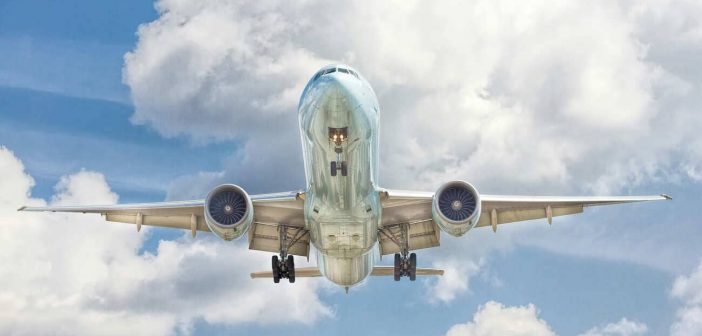Aerospace engineering education serves as a gateway to the fascinating world of designing, developing, and testing aircraft and spacecraft. This field combines the rigour of engineering principles with the excitement of space exploration and aviation technology. Students embarking on this journey can expect an immersive experience that both deepens their theoretical understanding of engineering and enriches their practical skills.
The allure of aerospace engineering as a field of study stems, in large part, from its direct impact on advancing human capability in air and space travel. It also plays a critical role in addressing some of the contemporary world’s most pressing challenges, including climate change and sustainable technology development. As the aerospace industry continues to evolve, driven by groundbreaking innovations and a global push towards more sustainable practices, the demand for engineers who are technically proficient, environmentally conscious, and ethically minded has never been higher.
Students entering the field today should prepare for an education that reflects the latest shifts in technology, societal needs, and industry standards. Let’s explore some key changes in aerospace engineering education that prospective students can expect and the demands these changes entail.
Emphasis on Sustainability and Green Technologies
Students of aerospace engineering today can expect to be introduced to concepts and practices aimed at reducing the environmental impact of aerospace vehicles, from their inception to the end of their lifecycle. This shift in focus reflects a broader industry move towards eco-friendly solutions, with an emphasis on developing technologies that promise to mitigate the effects of climate change.
Many courses in aerospace engineering cover the design and development of fuel-efficient engines, the use of lightweight composite materials to reduce fuel consumption, and the exploration of alternative energy sources, including solar power and biofuels, as viable options for powering future flights. Beyond traditional lectures, students are encouraged to participate in projects and research initiatives focused on green technologies. These hands-on experiences offer a practical understanding of how engineering principles can be applied to solve environmental challenges.
Increased Use of Simulation and Digital Tools
Aerospace engineering curricula increasingly incorporate digital simulation tools in the interest of offering students a window into the future of design and testing. These tools, ranging from computer-aided design (CAD) software to computational fluid dynamics (CFD) simulations, allow for the intricate modelling of aerospace vehicles under various conditions. This digital approach enables students to predict how designs will perform, identify potential issues, and make improvements much more efficiently than traditional methods would allow.
The advent of virtual reality (VR) and augmented reality (AR) technologies has further revolutionised the aerospace engineering classroom. By donning VR headsets, students can experience the virtual assembly of an aircraft engine or walk through the structural components of a spacecraft, thereby gaining a deeper understanding of complex systems without the need for physical models. AR applications enrich the learning experience by overlaying digital information onto the physical world and bringing textbook diagrams to life. This immersive technology both enhances comprehension and prepares students to work with the advanced digital tools that are becoming standard in the aerospace industry.
More Interdisciplinary Approach
Gone are the days when aerospace engineering students would focus solely on traditional aeronautics and astronautics subjects. Today, they frequently find themselves delving into computer science for software development or materials science for creating new, more effective materials. They may even study elements of business and project management to understand the broader context of engineering projects. This broad-based approach ensures that graduates are not only experts in their field but also possess a versatile skill set that allows them to innovate and adapt across various aspects of the aerospace industry.
Integrating systems engineering concepts into the curriculum has become particularly important. This reflects the industry’s need for engineers who can understand and optimise the complex interrelationships within aerospace systems. Students learn how different components work together, from propulsion systems to avionics, which, in turn, ensures that they can contribute effectively to the design and implementation of sophisticated aerospace projects.
Emphasis on Hands-on and Real-World Experience
A defining feature of contemporary aerospace engineering education is its emphasis on real-world experience and hands-on learning. Project-based learning has become a cornerstone of many programs, as it enables students to apply theoretical knowledge to practical challenges. Through designing, building, and testing their own projects, students gain invaluable insights into the engineering process, from conceptualisation to execution.
Complementing this practical approach, internships and cooperative education (co-op) programs play a crucial role in preparing students for the aerospace industry. Students can work with companies and government agencies to gain firsthand experience and professional insights, and they may make valuable connections that can greatly enhance their career prospects in the process. These experiences are fruitful opportunities for students to apply what they have learned in a professional setting, and they also expose students to the latest technologies and methodologies used in the aerospace sector.
Global and Ethical Perspectives
A global outlook is crucial in an industry where international partnerships and collaborations are the norm. Students are encouraged to engage in international projects and collaborations that expose them to a diversity of perspectives on aviation. Aerospace engineering education also often includes study abroad opportunities, international internships, or projects that involve working with students and professionals from around the world. Such experiences enhance the cultural understanding and communication skills that students will need to navigate the complexities of international aerospace projects.
Furthermore, aerospace engineering curricula are likely to incorporate discussions on ethics, legal considerations, and the societal impact of aerospace technologies. As the industry advances, ethical dilemmas and the social responsibilities of engineers come to the forefront. Programmes integrate these topics into the education of future aerospace engineers to produce professionals who are mindful of the broader implications of their work in addition to being technically proficient.
As the aerospace industry continues to strive for new heights of innovation and sustainability, aerospace engineering education is evolving to prepare students for the challenges and opportunities that lie ahead. This dynamic field offers a unique blend of academic study and practical experience, underpinned by a commitment to ethical and global perspectives. For those aspiring to shape the future of air and space travel, a career in aerospace engineering promises both the thrill of discovery and the opportunity to make a lasting impact on the world.





1 Comment
What opportunities does aerospace engineering education offer students in terms of exploring the realms of aircraft and spacecraft design, development, and testing?
Visit us Telkom University